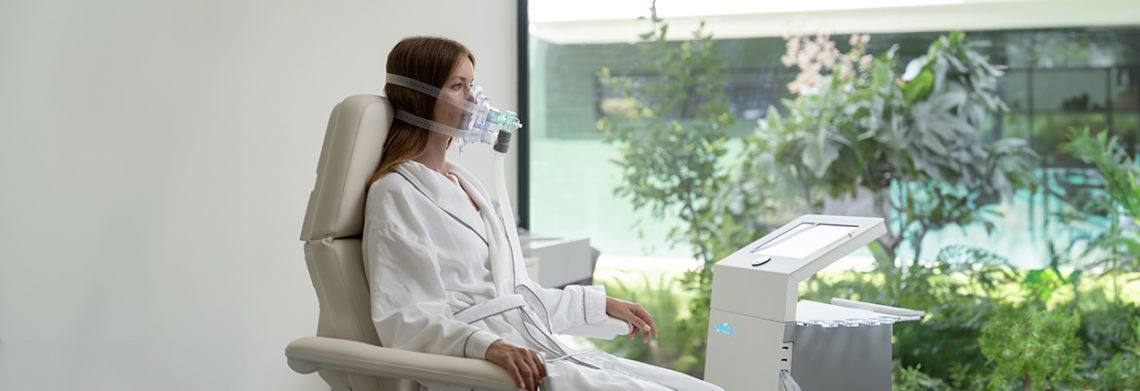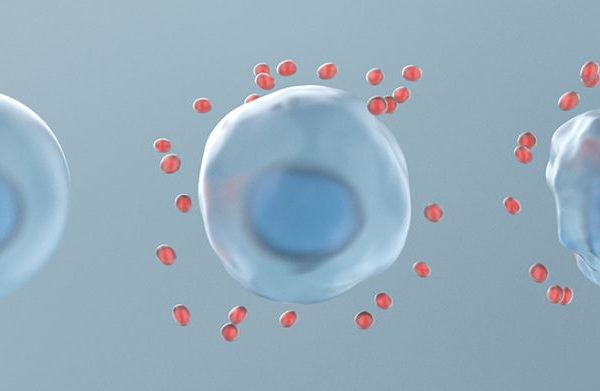
SHA Magazine Health & Beauty
Intermittent Hypoxia Therapy: The benefits of breathing with alternating cycles of more and less oxygen
In 2019, three physicians, Drs Peter J. Ratcliffe, Gregg L. Semenza, and William G. Kaelin, were awarded the Nobel Prize in Medicine after discovering how cells adapted to situations of low oxygen availability and how their changes to adapt to the new situations benefited the organism on several fronts.
Precisely this is the principle behind a new treatment offered by SHA Wellness, Intermittent Hypoxia Therapy, consisting in alternating respiratory cycles of low oxygen availability (hypoxia) with cycles of higher availability (hyperoxia) to stimulate physiological adaptations that are beneficial for the cells.
The therapy sessions are relaxing. Many patients even fall asleep. It involves lying on a stretcher while connected to a machine, for 30 to 40 minutes, and breathing through a mask. A medical professional monitors the patient’s oxygen saturation at all times while breathing cycles alternate: first the saturation can be progressively reduced by up to 20%, then take two to three minutes of rest, followed by recovery with a cycle of high oxygen availability.
Studies examining what happens to those who practice this therapy with the recommended frequency (three sessions per week on alternate days) show surprising results.
Dr Anna Baeza, head of Medical Services and Natural Therapies at SHA Wellness Clinic, explains that the body triggers several beneficial adaptive reactions, which are precisely the ones we want to replicate with this anti-ageing therapy, but in a controlled environment. “When oxygen decreases, the respiratory rate and respiratory capacity increase. The heart pumps more blood and the heart rate improves. Blood vessels dilate and the body becomes more efficient, as it has to perform at the same level with less oxygen.” says the SHA Wellness Clinic expert.
Dr Baeza explains that one of the quickest and most surprising benefits of this therapy is that it helps people suffering from insomnia sleep: “The drop in oxygen makes you sleepy and this therapy generates a relaxing vasodilatation. This has been demonstrated in several clinical trials.
Overweight and obese people will benefit from intermittent hypoxia as well, as these respiratory cycles influence how the body breaks down carbohydrates for energy. Furthermore, it improves the control of blood sugar after meals and helps to keep it at healthy levels.
In addition, this therapy is very advantageous for building muscle mass and it is a boon for speeding up metabolism. This new therapy promotes greater muscle activity and efficiency by increasing oxidative activity, which is essential for muscle cells to obtain energy. In addition, the therapy induces changes in aerobic metabolism, which is the way muscles generate energy from oxygen. These adjustments improve endurance and muscle ability to function efficiently for longer periods of time. Muscle fibres will improve both in volume and strength. For these reason, this therapy rapidly improves physical and sports performance.
Almost everyone could benefit from Intermittent Hypoxia Therapy: those with a controlled pathology would benefit from the adaptive mechanisms of hypoxia to fight their disease; and healthy people would integrate into their lives a powerful anti-ageing tool, backed by solid scientific evidence. Specifically, the 2019 Nobel Prize in Medicine.
The only cases in which treatment would be contraindicated, according to Dr Baeza, would be patients with poorly controlled cardiac and respiratory problems, people with acute infections with fever, people with epilepsy or chronic decompensated diseases, and pregnant women.





